Personal Wealth Management / Economics
Green Shoots in Global Goods Trade
It's early days, but there is some evidence global trade is staging a comeback.
While the global economy has grown nicely in recent years, one category has disappointed, sparking fears that "deglobalization" will threaten growth: global trade in goods. After rebounding strongly from the financial crisis, trade growth started slowing in 2012, and global exports plummeted in 2015. Plunging oil and commodity prices bore much of the blame, but even when you strip out energy-related trade, exports still fell. It's fair to call this a global economic headwind, and while the bull market marched on anyway, a trade pickup would probably be beneficial. Today, there is a small but growing pile of evidence this might be underway.
Exhibit 1 shows global trade in goods with and without fuel and metals since 1963. The fact that the global economy grew in 2015 despite a roughly $2.5 trillion drop in physical trade is a testament to just how strong most major economies are-as well as the increasing role trade in services plays. The world economy is far more resilient than it gets credit for these days.
Exhibit 1: Global Merchandise Trade
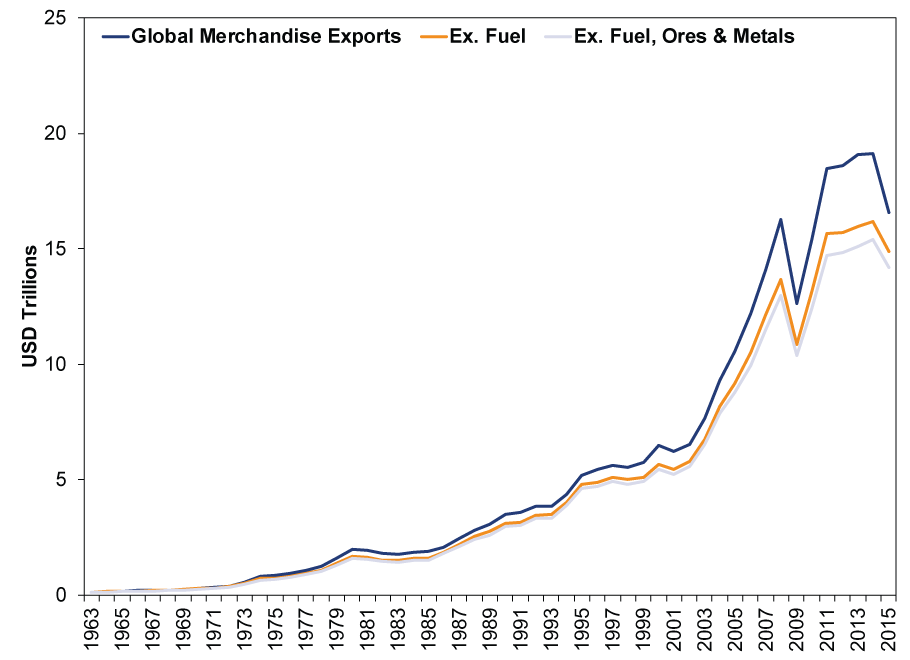
Source: World Bank, as of 10/28/2016. Data available here. 1963 - 2015.
Country-specific data also show trade was weak last year and into early 2016. However, in recent months, we've seen a nascent turnaround. US goods exports picked up in Q3, and while a one-off surge in soybean exports gets some of the credit, it doesn't tell the whole story. According to the Census Bureau, food exports rose by about $10.4 billion in Q3. Total goods exports rose nearly $14 billion. Growth wasn't just a hill of beans.
Exhibit 2: US Goods Exports
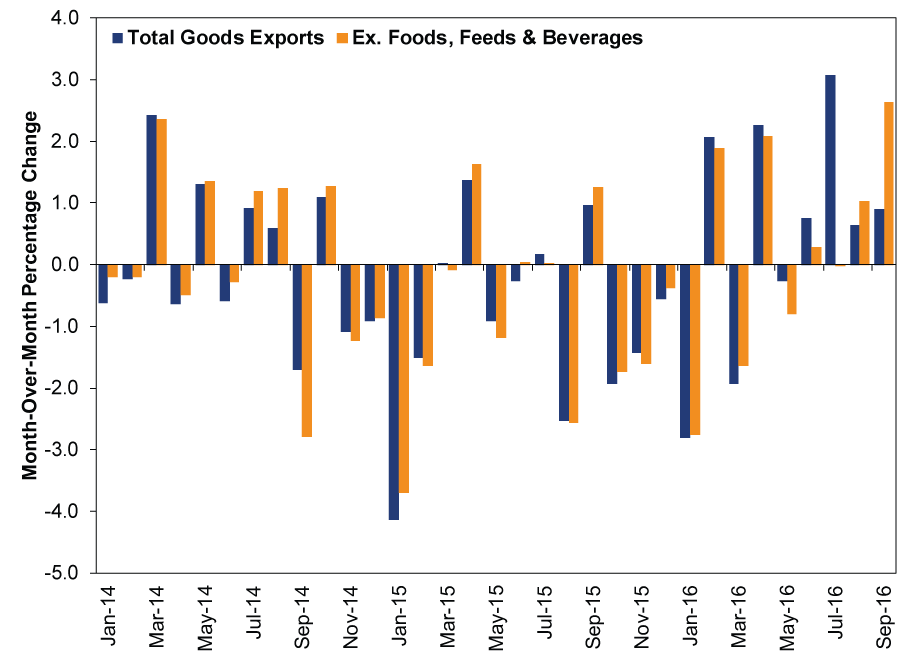
Source: FactSet and US Census Bureau, as of 10/28/2016. September 2016 calculation uses preliminary data from the Advance Report. Seasonally adjusted. January 2014 - September 2016.
The Export Orders subindex of the Institute for Supply Management's Manufacturing Purchasing Managers' Index (PMI) provides another look. This subindex spent most of 2015 under 50, implying a prolonged contraction in US factories' overseas business. But it ticked back over 50 in March and has been in expansion for seven straight months-a sign goods exports should stay firm, as today's orders are tomorrow's output.
Exhibit 3: New Export Orders
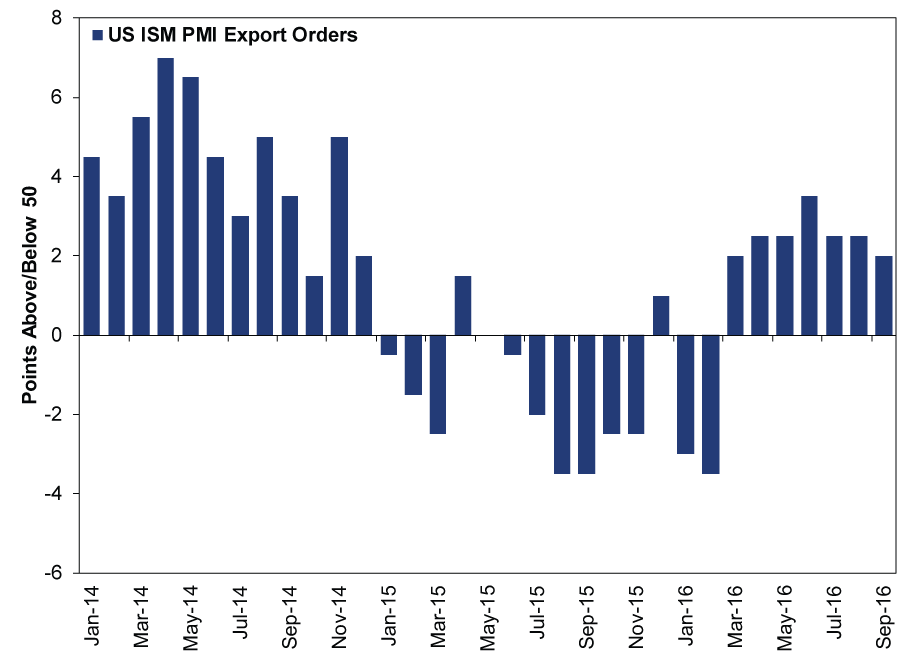
Source: FactSet, as of 10/28/2016. January 2014 - September 2016.
There are green shoots outside America, too. It's quite niche, but Taiwanese Export Orders have grown the last two months, after spending over a year in contraction. High-tech components feature prominently in Taiwanese industrial production and trade, so export orders are widely viewed as a bellwether for Tech-related trade globally. The bounce is young, and only time will tell whether it has staying power, but the uptick is noteworthy all the same.
Exhibit 4: Taiwan Export Orders
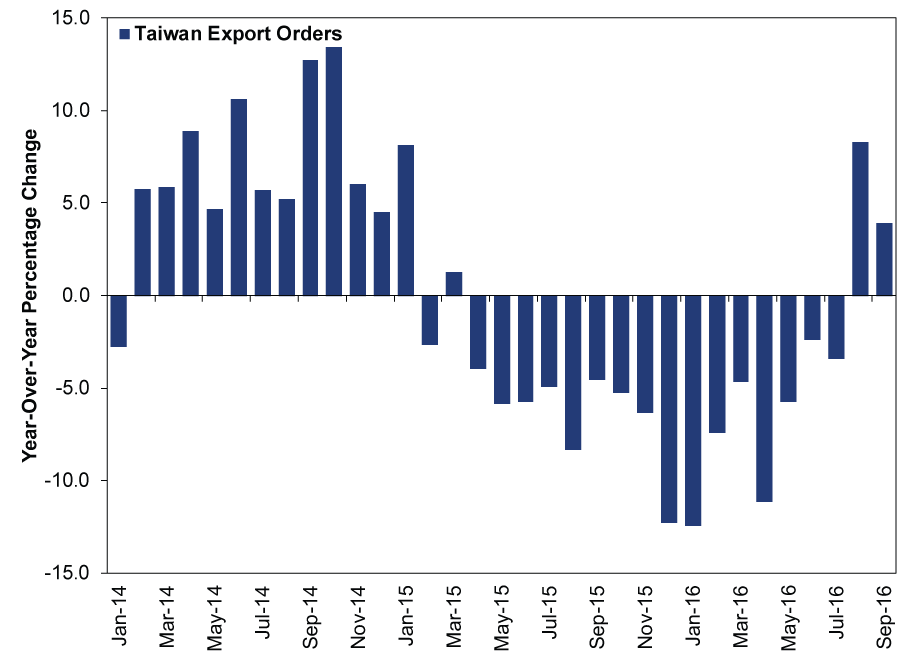
Source: FactSet, as of 10/28/2016. January 2014 - September 2016.
UK exports have also stabilized lately. Aside from a big pre-Brexit-vote pause in May, they've grown all year-a big turnabout from 2014 and 2015's frequent negativity. There, too, rising export orders suggest trade growth continue. According to Markit, orders rose at the fastest pace since 2014 in September, with UK manufacturers reporting improved demand throughout Asia, Europe, America and some Emerging Markets.
Exhibit 5: UK Exports
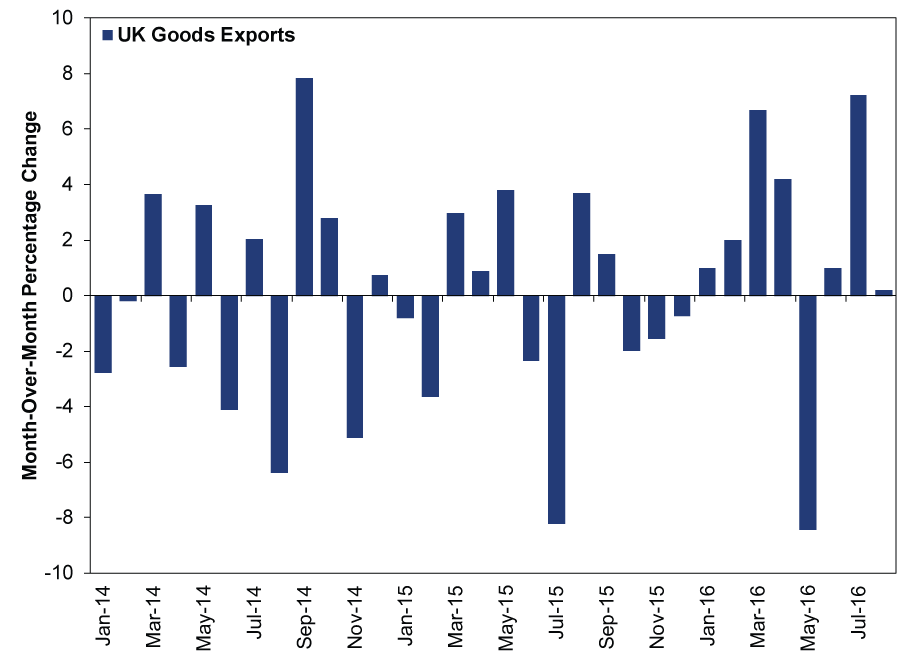
Source: FactSet, as of 10/28/2016. Seasonally adjusted. January 2014 - August 2016.
Swiss exports have turned around in a big way this year. Though it's a small country and not a huge contributor to global trade, exports are a big part of the Swiss economy-and Swiss exports go way beyond snazzy watches. Exports to China and the EU drove much of Swiss trades' 2015 weakness, and they rebounded nicely this year, evidence of rebounding demand for foreign goods in those end markets.
Exhibit 6: Swiss Exports
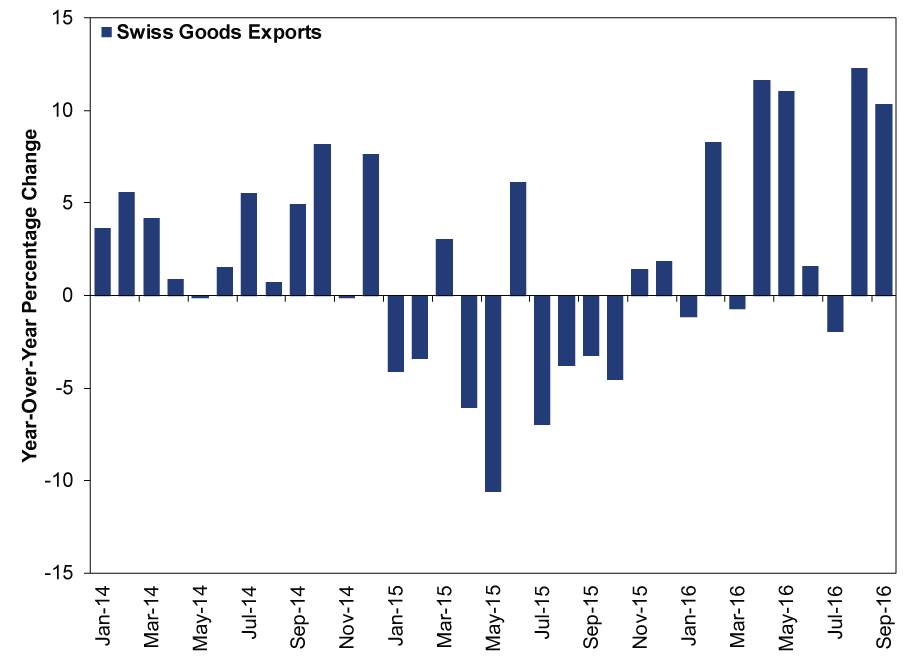
Source: FactSet, as of 10/28/2016. January 2014 - September 2016.
Some countries haven't joined the export party yet. Korean trade is still rocky, though more manufacturers have reported export order growth in recent months. China, Japan and several eurozone nations are also still struggling. But according to Markit and JPMorgan's Global Manufacturing PMI, export orders rose globally for the third straight month in September. It will take several more months to see if an uptrend develops, but for now, the data are encouraging-if this keeps up, resurgent export growth would be a modest tailwind for the global economy. And amid all the talk of globalization in retreat, it would be a welcome surprise for stocks.
If you would like to contact the editors responsible for this article, please message MarketMinder directly.
*The content contained in this article represents only the opinions and viewpoints of the Fisher Investments editorial staff.
Get a weekly roundup of our market insights
Sign up for our weekly e-mail newsletter.

You Imagine Your Future. We Help You Get There.
Are you ready to start your journey to a better financial future?

Where Might the Market Go Next?
Confidently tackle the market’s ups and downs with independent research and analysis that tells you where we think stocks are headed—and why.





